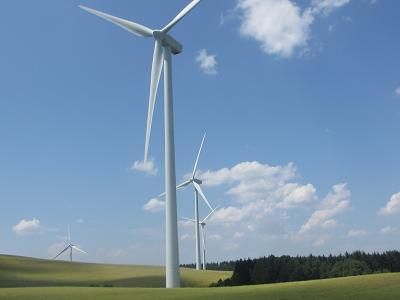Moving the climate change agenda forward
With each international conference the climate change debate moves onwards, and new layers of complexity and greater uncertainty emerge. There is an increasing urgency to maintain the momentum for policy changes that will secure the future of our planet and a sustainable environment for our children. WEC’s recent publications focus on achievable, practical action.

As Global Leaders meet for COP19, the task for policy-makers and negotiators is becoming increasingly difficult. The time has come to step back and look at the big picture to identify concrete and pragmatic policy measures that can be implemented by individual governments – either within the context of a COP agreement or unilaterally. We need to make inspired decisions. Action is needed now.
Energy is clearly at the heart of the climate change debate. The vast majority of emissions, directly or indirectly, have energy as their source. The World Energy Council (WEC) recognises this, and much of its work centres on finding policy recommendations aimed at creating a sustainable future for energy. The WEC is united in the belief that energy provides unparalleled benefits to mankind, and that negative impacts need to be mitigated.
In October 2013, at its triennial Congress in Daegu, South Korea (pictured below left), the WEC launched a number of major reports that give an insight into the future energy and environment landscape and provide a possible roadmap for policy-makers as they design their countries’ respective energy and environment policies. All reports are available to be freely downloaded from the website, www.worldenergy.org.
Time to get real
WEC’s World Energy Scenarios: Composing Energy Futures to 2050, produced with the Paul Scherrer Institute, gives policy-makers an insight into the future and the consequences of different policy approaches. The report envisions a very different world of energy in 2050 compared with today, and gives a  truly realistic indication of what the future energy landscape could look like. As such, it provides policy-makers with an extra tool when planning for a sustainable energy future.
truly realistic indication of what the future energy landscape could look like. As such, it provides policy-makers with an extra tool when planning for a sustainable energy future.
World Energy Scenarios show that by 2050 fossil fuels will still play a crucial role in the global energy mix. Coal is also going to continue to play an important role in the long run, especially for power generation in China and India, the two most rapidly growing energy consumers in the decades leading to 2050. Natural gas production, especially from unconventional sources, will continue to grow and account for an increasing proportion of the energy mix.
The age of oil is far from dead. Oil will continue to remain dominant as a transport fuel and we expect to see an increase in importance of unconventional energy sources – in particular oil sands and tight oil. For its part, nuclear energy is unlikely to grow at anywhere near the levels seen in previous decades. WEC anticipates a large increase in the share of renewables, mainly in solar photovoltaic energy and hydro globally.
As the global population grows and energy consumption rises, WEC’s World Energy Scenarios show that energy efficiency and energy conservation are absolutely crucial in ensuring that demand does not outstrip supply. However, the report warns that both require a change in the mind-set of consumers; and both have cost implications across industries. As a result, growing amounts of capital will be required to finance energy efficiency measures. Typically, investments in this area can take time before they are paid off.
World Energy Scenarios show that by 2050 fossil fuels will still play a crucial role in the global energy mix
Electric mobility will take longer than expected to make an impact on energy demand – at the earliest after 2030. The report warns that policy-makers need to undertake an even greater effort to promote the share ofrenewables in electricity production. This share is not increasing enough to ensure environmental sustainability in the long run to 2050 and beyond.
Despite growing energy demand and continued dependence on fossil fuels, the future is not necessarily dark for the planet and its environment. A reduction in greenhouse gas emissions is possible in the second half of the scenario period if strong global agreements and the implementation of cost-efficient market instruments like emissions trading within a cap and trade system are put in place sooner rather than later. Carbon capture utilisation and storage, referred to as CC(U)S, can play an important role as a cost-efficient CO2 mitigation tool if there is increased investment in developing implementable solutions – as well as a price for CO2 that is high enough to create right signals to provide an adequate incentive for CO2 reduction.
A stark warning
These large reductions in CO2 are possible if and when governments take concrete action and industry players and markets are given right incentives to provide suitable technological solutions to achieve this. However, current signals indicate that the global economy is not on track to meet the 450ppm reference. We need to do more and better.
WEC’s World Energy Scenarios offer a stark warning to politicians: the time of short-termism is over. A holistic long-term view of the energy sector is required to address these energy challenges up to 2050 and beyond. Critical uncertainties remain, especially with regard to CC(U)S and the scalability of energy storage technologies.
Responding to a triple challenge
In this complex world, governments play a crucial role in determining and establishing frameworks for markets to function. Policy-makers, industries and markets need to provide efficient solutions.
It is clear that the world is facing a triple challenge that WEC describes as the ‘energy trilemma’, namely the need for secure, affordable, and environmentally sustainable energy. Energy security, energy equity and environmental sustainability are the three pillars of this ‘trilemma’. Each of the three elements is vital to a healthy economic and social development of a country on the long term..jpg)
Each country has its own view on the relative importance of each element in the equation. While all countries are right to focus on energy security as a critical factor to fuel economic growth and social cohesion, there is more variability when it comes to energy access and affordability, the energy equity pillar, and even more so for the environmental sustainability pillar.
The key strength of WEC’s role is its total neutrality. The World Energy Trilemma report does not pass judgement but provides an objective toolkit for policy-makers, in the form of the Energy Sustainability Index. The Index provides public and private stakeholders with the opportunity to evaluate and benchmark their country against others in order to identify areas where action needs be taken in line with national priorities.
Through 2012 and 2013 WEC, in partnership with the global management consulting firm Oliver Wyman, interviewed over 100 global energy leaders – CEOs and senior executives, ministers for energy and the environment, senior policy-makers and regulators, as well as high-level representatives from intergovernmental organisations – to identify the necessary policies and regulation, industry actions, and barriers to the development of secure, affordable, and environmentally sustainable energy systems. Together, the interviewees represent an extraordinary body of energy industry knowledge and expertise and insights on what works and what does not work in terms of policy design and implementation.
The research found many areas of broad agreement among public and private energy leaders on how to tackle the energy challenges. The World Energy Trilemma: the Agenda for Change sets out ten areas for focused action. The challenge now lies in moving forward with all the necessary stakeholders, including energy industry, consumers, citizens, the financial sector, policy-makers and regulators in order to put the agenda into action.
Ten areas for focused action
- Define a coherent and predictable energy policy
- Implement stable regulatory and legal frameworks to support long-term investments
- Provide leadership to build consensus – national and globally
- Improve policy-maker and industry dialogue
- Increase engagement with the financial community
- Identify approaches to carbon pricing and complementary measures to drive investment in low carbon energy
- Design transparent, flexible and dynamic pricing frameworks
- Drive (green) trade liberalisation
- Meet the need for more research, development and demonstration (RD&D)
- Encourage joint pre-commercial industry initiatives, including early large-scale demonstration and deployment.
The way forward
One of the key findings from the WEC’s reports is that the focus of current thinking about the energy systems that have such an impact on the environment is in many ways inadequate. If we want to get the greatest social and economic benefits out of our energy systems while minimising the impact on the environment, the focus of attention must shift from the supply mix to demand efficiency.
We urgently need to realise the potential of breakthrough technologies such as electricity storage and CC(U)S
We need more demand side investments, innovation and incentives to reduce end use energy intensity. Instruments that distort the market, such as price controls, subsidies, trade barriers and absolute targets, must be used only as a last resort, due the potential unintended consequences of such actions.
Above all, we need significant investments in RD&D. We urgently need to realise the potential of breakthrough technologies such as electricity storage and CC(U)S. WEC analysis shows that the 450 parts per million CO2 limit is not possible without CC(U)S. It is essential, therefore, that there are clear and unambiguous policy and institutional frameworks to support investment in this technology to justify its inclusion in roadmaps and carbon emission reduction strategies.
I am personally delighted that the WEC is hosting part of the UNFCCC’s Business and Industry NGOs (BINGO) discussions at this year’s COP19, where we can take some of these action areas forward. COP19 provides a forum for us all to move forward on all these areas.








